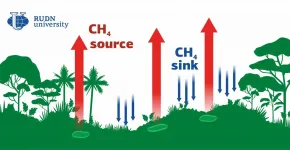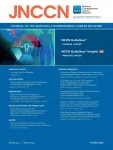Antibody-based COVID-19 treatments work best in concert with immune cells
Findings involving antibody effector functions could help improve design of next-generation COVID-19 antibody drugs
2021-02-16
(Press-News.org) Of the nine treatments and preventives for COVID-19 authorized for emergency use by the Food and Drug Administration, three are drugs made from so-called monoclonal antibodies. Such drugs provide patients with ready-made antibodies that neutralize the virus, bypassing the body's slower and sometimes less effective process of making its own antibodies.
But such therapies were developed without detailed information about how antibodies interact with the rest of the immune system during COVID-19. Faced with a new, deadly and fast-spreading disease, drug designers started work without knowing whether antibodies' ability to activate a variety of immune cells would aid or hinder efforts to control the disease. Such abilities are collectively known as antibody effector functions.
A new study from researchers at Washington University School of Medicine in St. Louis has shown that antibody effector functions are a crucial part of effectively treating infections with SARS-CoV-2 -- the virus that causes COVID-19 -- but are dispensable when the antibodies are used to prevent infection. The findings, available online in the journal Cell, could help scientists improve the next generation of antibody-based COVID-19 drugs.
"Some of the companies removed the effector functions from their antibodies, and other companies are trying to optimize the effector functions," said senior author Michael S. Diamond, MD, PhD, the Herbert S. Gasser Professor of Medicine. "Neither of these strategies is backed by data in the context of SARS-CoV-2 infections. Based on our findings, if you have a potently neutralizing antibody without effector functions and you give it before infection, as a preventive, it will probably work. But if you give it after infection, it won't work well; you need to optimize effector functions to get maximal benefit."
Antibodies are shaped like the letter Y. The tips of the two short arms are almost infinitely changeable, giving antibodies the ability to recognize virtually any molecular shape. The short arms attach to foreign molecules and target them for clearance. The long arm is where the effector functions are located. It attaches to receptors on immune cells, inducing them to kill infected cells and release molecules that sculpt the immune response.
But this process can go wrong. In a process known as antibody-dependent enhancement, interactions between the long arm of antibodies and immune cells can worsen some viral infections, notably infections with the tropical dengue virus. People who have antibodies against one strain of dengue virus are at risk of developing life-threatening dengue fever if they become infected with another strain of the virus.
To avoid the danger of antibody-dependent enhancement, some companies developing antibody-based COVID-19 drugs changed the sequence in the long arm of the antibodies to prevent it from interacting with immune cells. Other companies took the opposite tack: strengthening antibody effector functions to potentially boost the potency of their drugs.
To determine the role of antibody effector functions in COVID-19, Diamond and colleagues, including first author Emma Winkler, an MD/PhD student in Diamond's lab, and co-senior author James E. Crowe Jr., MD, of Vanderbilt University Medical Center, started with an antibody that is very effective at recognizing and neutralizing SARS-CoV-2. They eliminated the antibody's effector functions by mutating its long arm so that it could not stimulate immune cells.
The researchers gave separate groups of mice the original or the mutated SARS-CoV-2 antibodies, or a placebo antibody that does not recognize SARS-CoV-2. The antibodies were given to the animals one day before they were infected through the nose with the virus that causes COVID-19. Regardless of whether the effector functions of the antibodies were intact, the SARS-CoV-2 antibodies protected the mice against disease. Mice that had received either of the SARS-CoV-2 antibodies lost less weight and had lower levels of virus in their lungs than the ones that received the placebo antibody. Importantly, there was no sign of antibody-dependent enhancement of disease.
Then, the researchers investigated whether antibody effector functions are needed for treatment after infection. They gave mice the virus that causes COVID-19 and treated them one, two or three days later with the original or mutated SARS-CoV-2 antibodies, or a placebo antibody. Compared to the placebo, the original SARS-CoV-2 antibody protected mice against weight loss and death, but the one without effector functions did not.
Further experiments with different antibodies with and without effector functions, and in a different animal -- hamsters -- yielded the same result: Effector functions are an indispensable part of effective antibody treatment for COVID-19.
Some antibody-based drugs for COVID-19 are being developed as preventives for use in high-risk environments such as nursing homes. But most such drugs are geared toward treating people who are already infected. For that purpose, optimizing antibody effector functions could be the key to making a powerful drug, Diamond said. As part of this study, the researchers discovered that the loss of effector functions changed the kinds of immune cells that were recruited to fight the infection and how they behaved.
"'Effector functions' refers to a complex set of interactions between antibodies and other elements of the immune system," said Diamond, who also is a professor of molecular microbiology and of pathology & immunology. "You can introduce different point mutations to augment certain kinds of effector functions, and some might be harmful to the immune response while others might be beneficial. There's a lot of nuance. We are still learning how to harness effector functions so you get what you want but not what you don't want."
INFORMATION:
ELSE PRESS RELEASES FROM THIS DATE:
2021-02-16
Irvine, Calif., Feb. 16, 2021 -- A radioactive bone cement that's injected into bone to provide support and local irradiation is proving to be a safer alternative to conventional radiation therapy for bone tumors, according to a study led by University of California, Irvine researchers.
The study shows that this brachytherapy cement can be placed into spinal bones to directly irradiate tumors without harming the spinal cord, and the radioactive material will stay localized in the bones, which promises to virtually eliminate side effects.
Lead researcher Joyce Keyak, UCI professor of radiological sciences, presented the results at the 2021 annual meeting of the Orthopaedic Research Society, which was held virtually Feb. 12-16.
Cancers ...
2021-02-16
ITHACA, N.Y. - Working with a "star" employee - someone who demonstrates exceptional performance and enjoys broad visibility relative to industry peers - offers both risks and rewards, according to new research from the Cornell University's ILR School.
In collaborations, stars tend to get more than their share of the credit when things go well - and more of the blame when projects don't succeed, according to "Shadows and Shields: Stars Limit Their Collaborators' Exposure to Attributions of Both Credit and Blame," published Dec. 10, 2020, by Personnel Psychology.
"We look at ...
2021-02-16
Biologists from RUDN University described the role of tropical rainforests in the production of methane, the second most harmful greenhouse gas after CO2. It turned out that some areas of rainforests not only consumed methane but also emitted it. The results of the study were published in the Forests journal.
Although the share of methane in the atmosphere is relatively small (less than 1%), its contribution to the greenhouse effect is 20 to 30 times bigger than that of the same amount of carbon dioxide. The tropics are one of the main sources of methane. Previously, soil scientists used to focus only on swampy tropical areas, because methane-producing microorganisms live and multiply in the anaerobic conditions of swamps. As for ...
2021-02-16
UCLA RESEARCH ALERT
FINDINGS
A new study led by researchers at the UCLA Jonsson Comprehensive Cancer Center helps identify which patients with prostate cancer will benefit most from the use of prostate-specific membrane antigen PET imaging, PSMA PET, a novel imaging technique that recently was approved by the U.S. Food and Drug Administration.
By studying different variables and risk factors, researchers created a model that can be used in the clinic to identify patients who may have more extensive disease than anticipated and identify patients who are at higher risk of prostate cancer spreading to lymph nodes in the pelvis and beyond. The team found the percent ...
2021-02-16
In today's digital age, the use of "Internet-of-things" (devices embedded with softwares and sensors) has become widespread. These devices include wireless equipment, autonomous machinery, wearable sensors, and security systems. With their intricate structures and properties stems the need to scrutinize them closely to assess their safety and utility and rule out any potential defects. But, at the same time, damage to the device during inspection must be avoided.
Terahertz (THz) imaging, based on radiation with frequencies between 0.1 and 10 THz, is one such non-destructive method that is rapidly gaining popularity owing ...
2021-02-16
PLYMOUTH MEETING, PA [February 16, 2021] -- New research in the February 2021 issue of JNCCN--Journal of the National Comprehensive Cancer Network examined body mass index (BMI) data for people with HER2-positive early breast cancer, and found a 5% weight loss in patients over two years in was associated with worse outcomes. Weight gain over the same time period did not affect survival rates.
"The finding that weight loss, and not weight gain, was associated with worse outcomes is unexpected," said lead researcher Samuel Martel, MD, Universitè de Sherbrooke, Quebec, Canada, who worked with researchers in Belgium, Brazil, Germany, Italy, Switzerland, and the United Kingdom, as well as the ...
2021-02-16
Images provide information - what we can observe with our own eyes enables us to understand. Constantly expanding the field of perception into dimensions that are initially hidden from the naked eye, drives science forward. Today, increasingly powerful microscopes let us see into the cells and tissues of living organisms, into the world of microorganisms as well as into inanimate nature. But even the best microscopes have their limits. "To be able to observe structures and processes down to the nanoscale level and below, we need new methods and technologies," says Dr Silvio Fuchs from the Institute of Optics and Quantum Electronics at the University of Jena. This applies in particular to technological ...
2021-02-16
A recent qualitative study sheds light on how people cope with health and financial challenges, highlighting the important role that communication plays in these coping strategies.
"This is one of the first studies to look at how people respond to the combination of financial uncertainties and health uncertainties," says Lynsey Romo, first author of the study and an associate professor of communication at North Carolina State University. "And it drives home that uncertainty about money and uncertainty about health go hand in hand. Financial limitations created significant health challenges - such as an inability to afford prescription medications. And health problems created significant expenses leading to serious financial challenges.
"The study also highlights that these ...
2021-02-16
A comprehensive database of Estonian soils and a map application has been completed in cooperation with researchers of the University of Tartu and the Estonian University of Life Sciences. The database makes Estonian soil information easily accessible and can be used from local farm-scale to national-level big data statistical analysis and machine-learning models.
"Soil data is possibly the most undervalued and yet complicated type of environmental data there is. The diversity of organic, chemical, living and dead materials that make up a handful of dirt is astounding," said Alexander Kmoch, ...
2021-02-16
BINGHAMTON, NY -- Rich nations should not engage in "vaccine nationalism" and keep the COVID-19 vaccine to themselves when poorer nations need them, according to Nicole Hassoun, professor of philosophy at Binghamton University, State University of New York. Hassoun's paper, "Against Vaccine Nationalism," was published in the Journal of Medical Ethics.
While rich countries like the US and UK are starting to vaccinate their populations against COVID-19, poor countries may lack access to a vaccine for years. Canada, for instance, has already secured enough to vaccinate its entire population nine times over, and the US, European Union, UK, Australia, and Japan can vaccinate their populations between 2-8x.
"Vaccine nationalism ...
LAST 30 PRESS RELEASES:
[Press-News.org] Antibody-based COVID-19 treatments work best in concert with immune cells
Findings involving antibody effector functions could help improve design of next-generation COVID-19 antibody drugs



